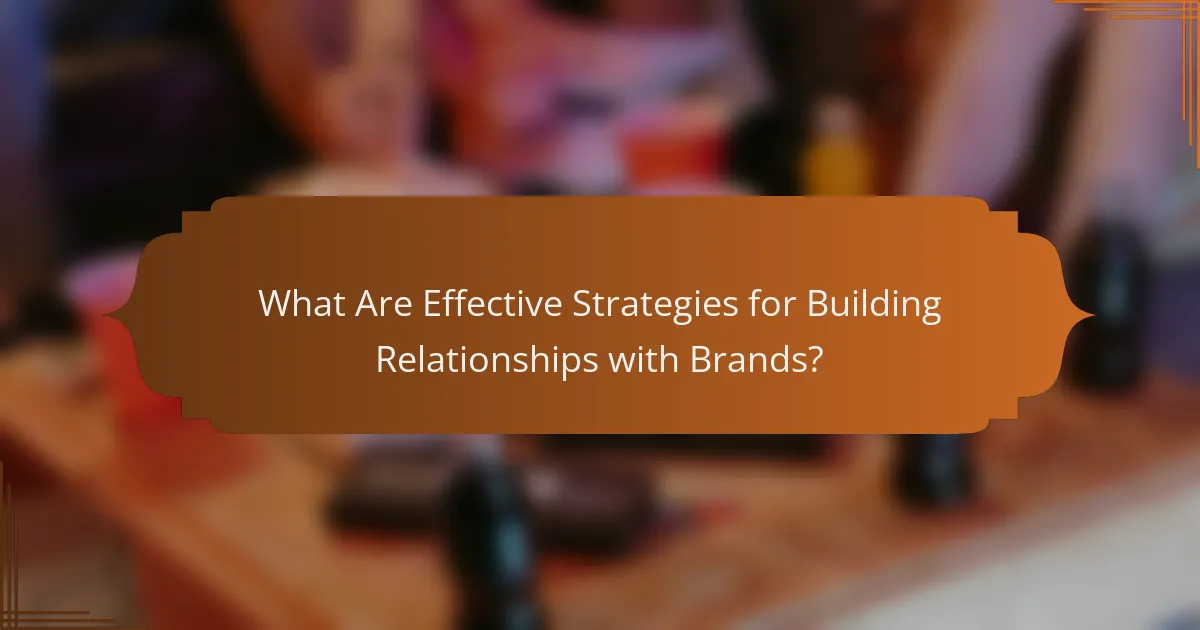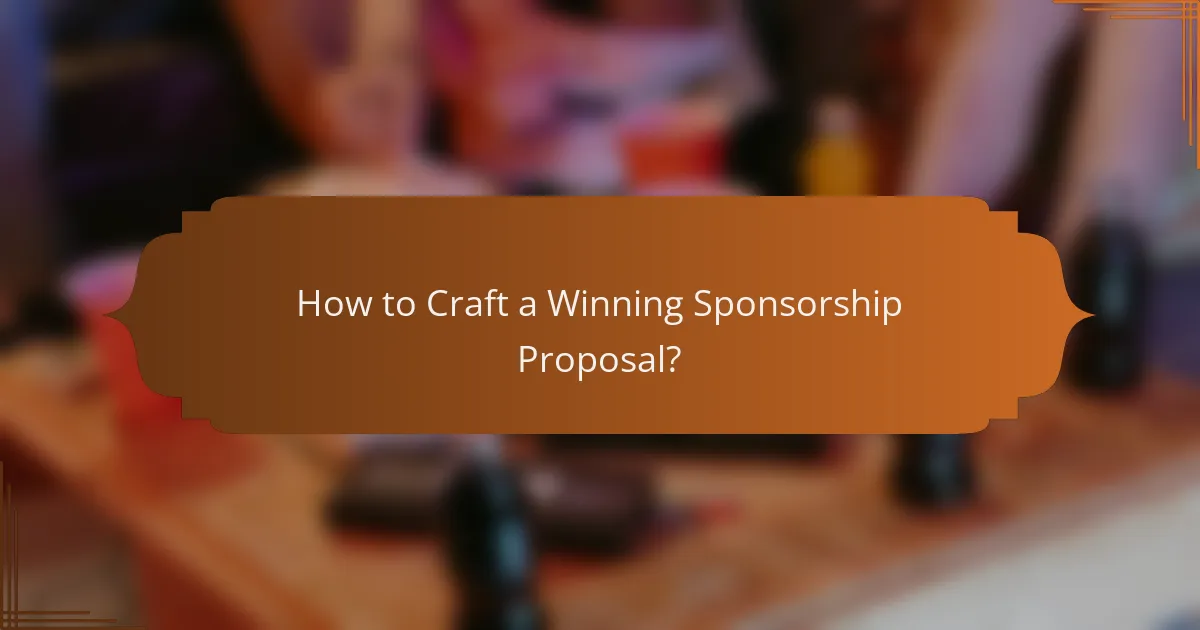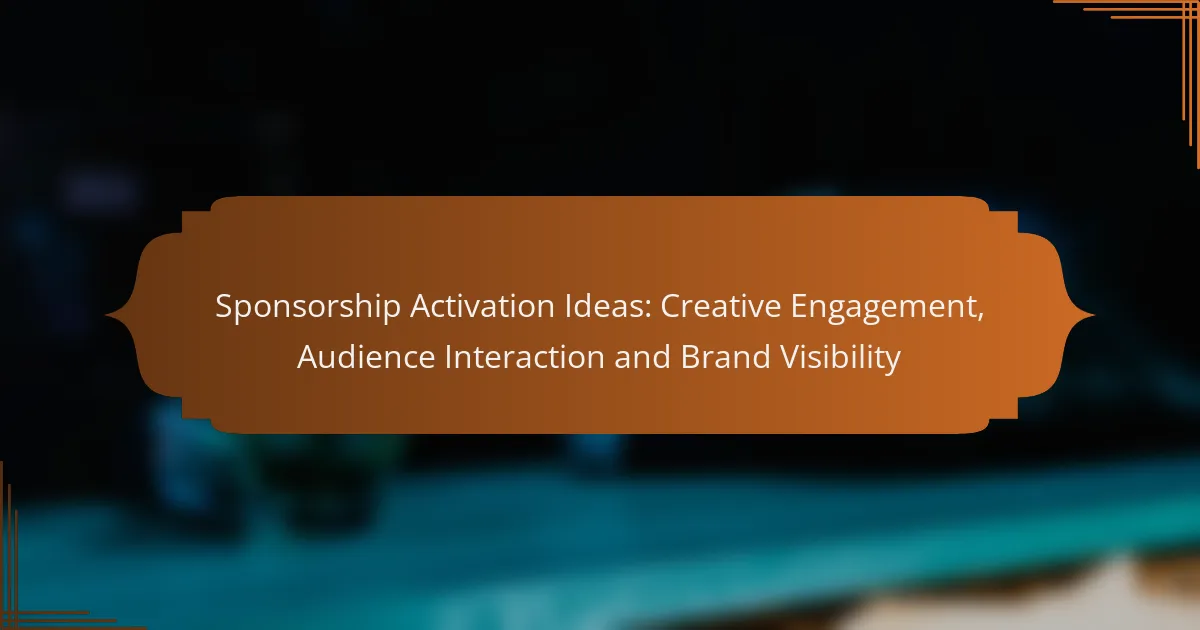Finding the right sponsors for your project involves a strategic approach that begins with identifying brands that share your values and objectives. By building meaningful relationships through personalized communication and understanding their needs, you can create partnerships that are beneficial for both parties. Crafting a compelling sponsorship proposal that highlights mutual benefits and relevant data is crucial for securing support and ensuring a successful collaboration.

How to Identify Potential Sponsors for Your Project?
Identifying potential sponsors involves researching brands that align with your project’s values and objectives. Focus on understanding their target audience and how your project can benefit them, ensuring a mutually beneficial partnership.
Researching Brand Values
Start by examining the mission statements, marketing materials, and past sponsorships of brands to determine their core values. Look for alignment with your project’s vision, as this will increase the likelihood of a successful partnership.
Consider creating a list of brands that resonate with your project’s ethos. For example, if your project promotes sustainability, target companies known for their environmental initiatives.
Analyzing Target Audience Compatibility
Assess the demographics and interests of your project’s audience to find brands that cater to similar groups. Compatibility in target audiences enhances the appeal of your proposal to potential sponsors.
Utilize surveys or analytics tools to gather data on your audience’s preferences. This information can help you match with brands that are eager to reach your specific demographic.
Utilizing Sponsorship Platforms
Leverage online sponsorship platforms that connect projects with potential sponsors. These platforms often allow you to filter brands by industry, budget, and sponsorship type, making it easier to find suitable matches.
Some popular platforms include SponsorMyEvent and Sponsorship.com. Create a compelling profile for your project to attract the right sponsors effectively.
Networking at Industry Events
Attend industry conferences, trade shows, and networking events to meet potential sponsors face-to-face. Building personal relationships can significantly increase your chances of securing sponsorships.
Prepare an elevator pitch that clearly outlines your project and its benefits. Engage with representatives from brands that align with your goals, and follow up with them after the event.
Leveraging Social Media Insights
Utilize social media platforms to identify brands that engage with audiences similar to yours. Analyze their content and interactions to understand their marketing strategies and sponsorship interests.
Tools like Hootsuite or Sprout Social can help you track brand mentions and engagement metrics. Use these insights to tailor your sponsorship proposals to highlight how your project aligns with their social media goals.

What Are Effective Strategies for Building Relationships with Brands?
Building relationships with brands requires a strategic approach that focuses on personalized communication, active engagement, and mutual value creation. By understanding brand needs and aligning your goals, you can foster long-lasting partnerships.
Personalized Communication Approaches
Effective communication is tailored to the specific brand you are targeting. Research the brand’s values, mission, and recent campaigns to craft messages that resonate with them. Use their language and highlight how your collaboration aligns with their objectives.
When reaching out, consider using a mix of formal and informal tones based on the brand’s culture. Avoid generic templates; instead, personalize each message to show genuine interest and effort. This can significantly increase your chances of a positive response.
Engagement through Social Media
Social media platforms are powerful tools for building relationships with brands. Engage with their content by liking, sharing, and commenting thoughtfully. This not only increases your visibility but also demonstrates your commitment to their brand.
Consider creating content that tags the brand or aligns with their campaigns. This can lead to organic interactions and may catch the attention of brand representatives. Regular engagement can help establish you as a valuable partner in their community.
Offering Value through Collaboration
To build a strong relationship, focus on what you can offer the brand. Identify areas where your skills or audience can complement their marketing efforts. Propose collaborative projects that provide mutual benefits, such as co-hosted events or joint content creation.
Be clear about the value you bring to the table. This could include access to your audience, unique insights, or creative ideas that enhance their brand visibility. Always ensure that the collaboration aligns with both parties’ goals for a successful partnership.

How to Craft a Winning Sponsorship Proposal?
To craft a winning sponsorship proposal, focus on clearly defined objectives, mutual benefits, and relevant data. A well-structured proposal tailored to the brand’s needs can significantly increase your chances of securing sponsorship.
Defining Clear Objectives
Start by outlining specific goals for the sponsorship. These could include increasing brand visibility, enhancing community engagement, or driving sales. Clearly defined objectives help both parties understand the expected outcomes and align their efforts.
Consider using the SMART criteria—specific, measurable, achievable, relevant, and time-bound—to refine your objectives. This approach ensures that your goals are realistic and can be tracked effectively.
Highlighting Mutual Benefits
Emphasize how the partnership will benefit both you and the sponsor. This could involve showcasing your audience demographics, engagement rates, or unique offerings that align with the brand’s values. Highlighting these mutual benefits fosters a sense of collaboration.
For example, if you’re hosting an event, explain how the sponsor’s brand will gain exposure through promotional materials, social media mentions, and on-site branding. This creates a win-win scenario that appeals to potential sponsors.
Including Data and Metrics
Incorporate relevant data and metrics to support your proposal. This could include audience statistics, past sponsorship successes, or market research that demonstrates the potential impact of the partnership. Data adds credibility and helps sponsors make informed decisions.
Use visuals like charts or graphs to present this information clearly. For instance, showing growth trends in your audience reach over time can effectively illustrate your potential value to sponsors.
Tailoring Proposals to Brand Needs
Customize each proposal to address the specific needs and goals of the brand you are targeting. Research the brand’s previous sponsorships and current marketing strategies to align your proposal with their objectives.
For instance, if a brand focuses on sustainability, highlight how your project promotes eco-friendly practices. Tailoring your proposal not only shows your commitment but also increases the likelihood of a positive response.

What Criteria Should You Consider When Selecting Sponsors?
When selecting sponsors, consider brand alignment, budget, and previous sponsorship experience. These criteria help ensure that the partnership is mutually beneficial and supports your goals.
Brand Alignment with Your Values
Choosing sponsors that align with your values is crucial for authenticity. A partnership with a brand that shares your mission can enhance credibility and resonate with your audience.
Evaluate potential sponsors based on their brand image, messaging, and community involvement. For example, if you promote sustainability, look for brands known for eco-friendly practices.
Budget and Financial Stability
Assessing a sponsor’s budget and financial stability is essential to ensure they can fulfill their commitments. A financially secure sponsor is more likely to provide consistent support throughout your partnership.
Research the sponsor’s market presence and financial health. Look for brands with a history of successful sponsorships, as they are typically more reliable in funding events or initiatives.
Previous Sponsorship Experience
Understanding a sponsor’s previous sponsorship experience can provide insights into their reliability and effectiveness. Brands with a solid track record are often easier to work with and understand the value of sponsorship.
Ask for case studies or references from past partnerships. This can help you gauge how they engage with sponsors and their ability to deliver on promises.

How to Measure the Success of Sponsorships?
Measuring the success of sponsorships involves evaluating various performance indicators to determine their impact on brand visibility and engagement. Key metrics include audience reach, engagement rates, and return on investment (ROI).
Tracking Engagement Metrics
Engagement metrics are essential for assessing how well a sponsorship resonates with the target audience. Key metrics to track include social media interactions, website traffic, and event attendance. These indicators provide insight into audience interest and involvement.
For instance, if a sponsored event sees a significant increase in social media mentions or shares, it suggests that the sponsorship is effectively engaging the audience. Similarly, tracking website visits during and after the sponsorship can reveal how many people are interested in learning more about the brand.
To effectively track these metrics, utilize tools like Google Analytics for web traffic, social media analytics for engagement rates, and event management software for attendance figures. Regularly reviewing these metrics helps identify trends and areas for improvement.



